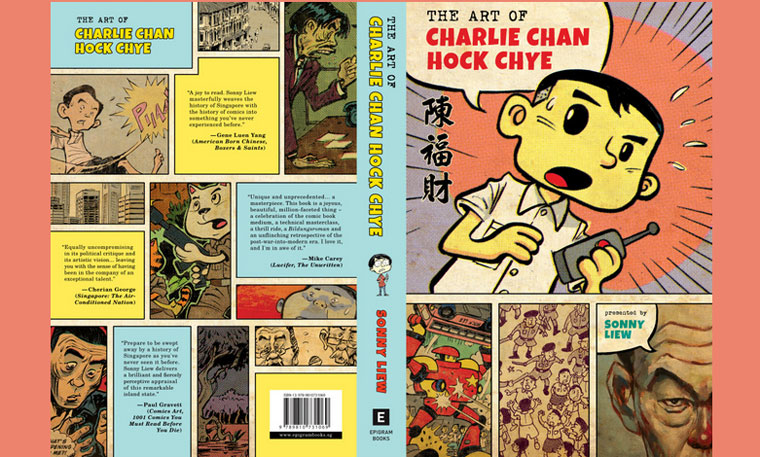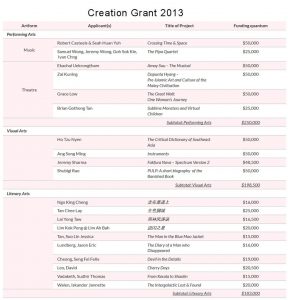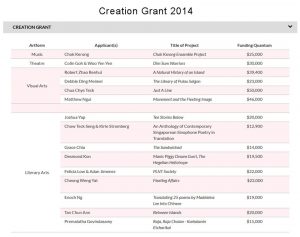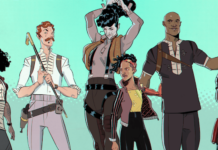Sonny Liew’s The Art of Charlie Chan Hock Chye is already a classic in his native Singapore, as the first graphic novel to win a major literary award, and its one of the most startling and original graphic novels of the year anywhere. Displaying cartooning skills, vision and a sense of Singapore history, it’s the equivalent of a Maus or Persepolis for Asia.
But just because a comic is a classic doesn’t mean you can live off the proceeds. Liew wrote a detailed breakdown of the money he made from the book on Facebook, including a criticism of the kind of literary grants that are given out. While his criticism is mostly based on that (American cartoonists would think they were having a hallucination if they got a grant) it’s still a sobering look at the cost of making comics. We’ve reproduced it here with Liew’s permission.
Edited to add: there is some extremely straight talk about money in the comment on the original post.
_______
Juggling personal and commercial projects is something most artists face. On the eve of making a decision about accepting a Creation Grant from the NAC for my next book, I thought I’d be open about the financial side of The Art of Charlie Chan Hock Chye (CCHC), for what it’s worth – perhaps to be clearer to anyone wanting to draw comics what the challenges are, perhaps to start a dialogue with government agencies and publishers about the realities of the process.
CCHC took about 2 years to complete – the research and bulk of the writing and drawing took about 18 months, followed by another 6 months or so of editing and polishing. In between I did a few other things, such as the book on Georgette Chen, and a couple of illustration projects here and there.
Leaving aside the inbetweeners, here’s the breakdown of the moolah from CCHC so far (note: comics tend to receive lower advances in the book world as they’re more of a niche market than, say, literary fiction):
Epigram Books Advance: SGD$9000
Epigram Royalties (2015): SGD$5,333.23
Pantheon Books Advance: USD$25000 = approx SGD$33,750 (1.35 exchange rate)
Less Agent’s Fee and Epigram Cut= SGD$20,000
French Advance: 15,000 Euros = approx SGD$23,000 (1.5 exchange rate)
Less Agent’s Fee and Epigram Cut= SGD$13,200
Italian: USD$3617 = approx SGD$4900
Less Agent’s Fee and Epigram Cut=SGD $2,800
SG Lit Prize= SGD$10,000
Total= approx SGD$60,000
(Yes – as of 2015, the net sum I received from Epigram Books was close to $0 after taking into account their cut of rights sales, though that number will get healthier as the book continues to do well in 2016 :p)
That translates into, over 24 months, about 2.5k/month
Which is not such a bad thing if you think of it in terms of “doing something you love”, but quite sobering when compared to other endeavours, from teaching to engineering or management, medicine etc etc.
In contrast, working for Marvel/DC projects (like Doctor Fate) gets you about $10k/month – higher if you have a hit title ($25k perhaps) and leaving aside the superstars and outliers. So if you’d spent 24 months working on a Big Two title, you’d have made maybe 240k.
For my next book, the hope was to be able to work on something exclusively for 18 months – so there was an application for the NAC’s Creation Grant, for 50k, which is the grant cap. The NAC’s offer is considerably less. I’m not sure I can mention the exact figure before making a decision on it, but let’s say it’s somewhere between 15k to 20k.
As of now, it’s impossible to be certain how much the next book will receive in terms of advances from publishers – but with a ballpark guesstimation of 50k, that will translate into maybe monthly earnings of 3-4k/month.
Which again is not a bad amount, though maybe a reflection of the thoughtGene Luen Yang offered on comics in a conversation – which is that you can be a pretty good Engineer and make a good living, whereas a pretty good Comics Creator will face a bigger challenge in being able to afford the costs of a house, education for kids etc.
But note that the number does not yet take into account things like paying for editorial fees or research costs, as well the uncertainty in the reality of the 50k figure guesstimated. If a Singaporean comics creator did a book that wasn’t lucky enough to get overseas publishers interests, that monthly income would drop drastically to something like 1 to 1.6 k a month, depending on the advance received from a local publisher.
The Creation Grant’s explicit goal is to support “the creation, adaptation and re-development of distinctive artistic content. Through a rigorous creation process, we seek to expand the canon of Singapore-made works that engage audiences at home and abroad.”
The ceiling for a Literary grant was raised in time from 25k to 50k – but according to the NAC, the 25k increase is meant mainly to reflect projects that “involve multi-disciplinary components such as a performance showcase and exhibition.”
So this means if you’re making comics, you’re stuck with a 25k cap on the grant- and that’s something I think needs addressing.
For a period, the NAC wasn’t sure how to categorise comics – it involves both Text and Images – so is it Visual (50k grant cap) or Literary (effective 25k cap)?
In the end, they opted to place it in the Literary category. But this fails to take into account the Visual side of comics. All things being equal, most comics writers are able to turn out a script in a week, whereas the drawing takes month (this is based on the US mainstream monthly 20-page or so comic).
So I suppose this is an open call of sorts to the NAC to review how it approaches comics in its grant structures – an actual 50k cap would be more in keeping with the demands of the medium – though I’d argue a figure closer to 100k for the effort and time needed to complete a proper graphic novel would be a fairer reflection :p
New management at the NAC also appears to be clamping down on delivery times – they want to make sure the work is largely completed in 18 months. Yet given the grant amount, creators would be compelled to take on commercial work – which then makes the completion of the work within the time frame more difficult – a case of perhaps demanding too much from creators in exchange for not quite enough moolah.
As an addendum in response to some of the feedback – the numbers quoted here are of course a static snapshot – with the imminent release of the French edition and other factors, the book could have some more legs to it in the long run. And yes, there is the option of doing more commercially inclined projects within comics so it’s not a backs to wall situation.
But in the sense of helping create “distinctive artistic content”, I’d say that that needs to be more dialogue, so that the agencies here get a better sense of the real challenges artist in Singapore face, and perhaps a need for higher grant quantums across the board, if we seek to be able to give creators more room for working on their projects in this high cost-of-living nation.
Finally – Epigram’s position on backend earnings is also understandable – publishing is generally a low-profit-margin industry. So government support for local publishing and the book industry generally is also something that needs addressing – the challenges facing creators, publishers and bookstores are very real, and I hope the powers that be will find some time to talk to us to understand the situation a little better.
The photos attached are screencaps from the NAC’s grant website:https://www.nac.gov.sg/…/supp…/funding/grant-recipients.html
For Marvel/Dc rates, see also: https://www.quora.com/How-much-on-average-do-top-comic-book…
For a sense of where arts funding fits into the wider picture of government spending: https://www.facebook.com/sonny.liew/posts/10154315624131181
CCHC website: www.artofcharliechan.com
And if anyone wants to support on Patreon : https://www.patreon.com/sonnyliew









Liew’s facebook readers probably know the context, but for those who don’t know, CCHC is a 320 page book, full colour, and the Pantheon edition retails for $30, to get a handle on those numbers. That means for the American rights, Pantheon paid an advance of about $80 a page, of which Liew gets less than $50. If you assume that the royalty rate is 15%, they’d have to sell about 5500 copies to earn out the advance and start paying royalties (adjust as needed if you think 15% is high or low).
If you assume in 2 years he could do 20 issues of a DC book, at $7500 an issue, he’d have gotten $150,000. Using that 15% and assuming the agent and publisher cut remains constant, he’d be getting about $2.70 per copy from Pantheon after earning out the advance, so they’d have to sell 55k copies for him to get a similar amount.
Comments are closed.